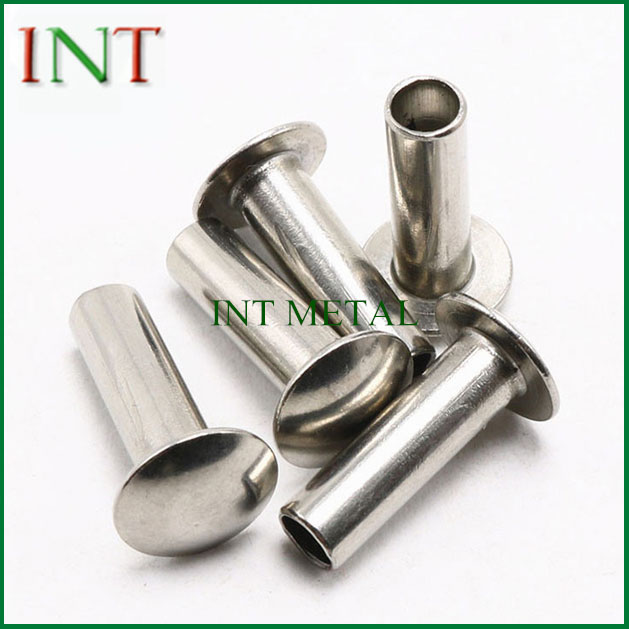Ensuring Compliance: Industry Standards for Hollow Steel Rivet Installation
2024-05-10
In the realm of industrial and manufacturing processes, adherence to industry standards and regulations is paramount to ensure the safety, reliability, and quality of assembled structures or components. Hollow steel rivets, as fundamental fastening components, are subject to various standards and guidelines governing their installation and use. Let's delve into the industry standards and compliance measures that should be followed during hollow steel rivet installation and assembly processes to uphold quality and reliability.
Industry Standards and Regulations:
1. ASTM International:
ASTM International, formerly known as the American Society for Testing and Materials, develops and publishes standards for materials, products, systems, and services. ASTM standards relevant to hollow steel rivets include ASTM F3125 for structural bolts, ASTM A502 for rivet wire, and ASTM A502/A502M for steel rivets.
2. SAE International:
SAE International, previously known as the Society of Automotive Engineers, establishes standards for the automotive and aerospace industries. SAE standards related to rivets may include SAE J492 for rivet materials and SAE J492A for rivet wire.
3. ASME Boiler and Pressure Vessel Code:
The ASME Boiler and Pressure Vessel Code provides standards and guidelines for the design, construction, inspection, testing, and certification of pressure vessels and their components. While primarily focused on pressure equipment, certain sections may be applicable to riveted joints used in pressure vessel construction.
4. ISO Standards:
The International Organization for Standardization (ISO) develops and publishes international standards covering various industries and disciplines. ISO standards related to fasteners, materials, and manufacturing processes may provide guidance on the selection, design, and use of hollow steel rivets.
Compliance Measures for Installation and Assembly:
1. Material Selection:
Ensure that the hollow steel rivets selected for the application meet the specifications and requirements outlined in relevant industry standards and regulations. Verify the material composition, dimensions, strength, and corrosion resistance of the rivets to ensure compliance with applicable standards.
2. Installation Procedures:
Follow manufacturer recommendations and industry best practices for rivet installation procedures. Ensure that proper techniques, tools, and equipment are used to achieve uniform, secure, and reliable riveted joints. Adhere to recommended torque values, hole preparation methods, and rivet installation sequences to ensure compliance with standards and regulations.
3. Quality Control and Inspection:
Implement quality control measures throughout the riveting process to verify compliance with industry standards and regulations. Conduct visual inspections, dimensional measurements, and mechanical testing to assess the integrity of riveted joints and identify any defects or inconsistencies. Document inspection results and maintain records of compliance for auditing and certification purposes.
4. Training and Certification:
Provide training and certification programs for personnel involved in rivet installation and assembly processes. Ensure that operators are familiar with industry standards, regulations, and best practices for riveting operations. Regularly update training programs to incorporate changes in standards or technology and ensure ongoing compliance with regulatory requirements.
5. Documentation and Records Keeping:
Maintain comprehensive documentation of rivet installation and assembly processes, including material certifications, inspection reports, test results, and compliance records. Ensure that all documentation is accurate, up-to-date, and readily accessible for audit and verification purposes. Establish procedures for record retention and archiving to meet regulatory requirements.
6. Continuous Improvement:
Continuously monitor and evaluate riveting processes to identify opportunities for improvement and ensure ongoing compliance with industry standards and regulations. Implement corrective actions and preventive measures to address non-compliance issues and mitigate risks to product quality and safety. Foster a culture of continuous improvement and commitment to excellence in riveting operations.
Conclusion:
In conclusion, adherence to industry standards and regulations is essential for ensuring the quality, safety, and reliability of hollow steel rivet installation and assembly processes. By following established standards, implementing compliance measures, and maintaining documentation of compliance, manufacturers can uphold the highest standards of quality and integrity in riveting operations. By fostering a culture of compliance and continuous improvement, companies can demonstrate their commitment to excellence and build trust with customers, regulators, and stakeholders in the industrial and manufacturing sectors.



